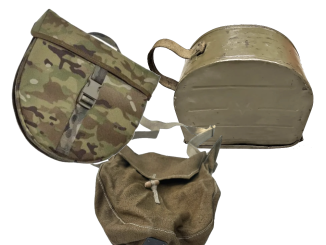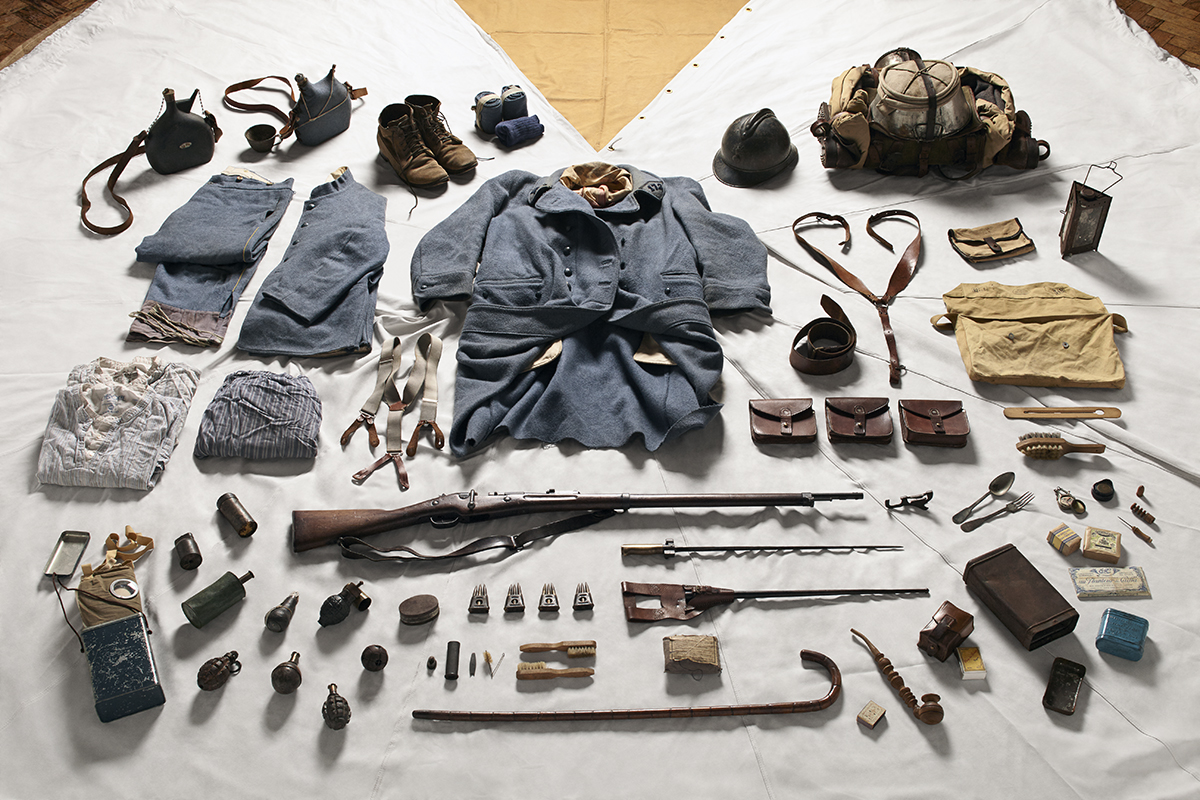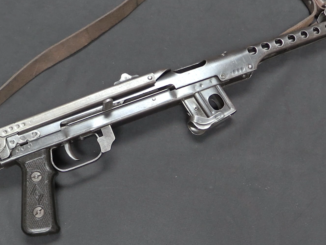The Russian M1910 Maxim was clearly obsolete in the 1930s, and the Soviet military developed a replacement for it – the Degtyarev DS-39. These performed well in testing, but several major flaws were revealed when they started seeing field use (including in the Winter War) and production ceased after just 10,000 were made. The Maxim went back into service, and a crash program was put in place to find a more suitable replacement.
At the time, a young designer named Goryunov was already working on a light machine gun. He and his design team figured that they could pretty easily adapt it to the heavy MG requirements, and the result was the SG-43. Like the DS-39, it was a gun intended for multiple roles, although it did not have the dual rate of fire option of the Degtyarev. It was chambered for the standard 7.62x54R cartridge, using standard Maxim metallic belts. The Goryunov was a simple and economical gun to produce, and used a gas operating system with a side-tilting bolt. The feed system actually shows a lot of similarity to Degtyarev’s post0war RP-46 belt fed adaptation of the DP-27. Anyway, the Goryunov was adopted in 1943 (largely because Degtyarev personally recommended it as better than his own design) and would serve as the standard Soviet heavy machine gun and vehicular machine gun until the 1960s, when it was replaced by the PK.




Deep bench at Shooter’s Outpost. Must have a big secure room.
the upstairs is all museum. the whole building is very secure.
If you are wondering how ГВГ looked like see 2nd photo from top
https://www.kalashnikov.ru/dve-zagadki-ctankovogo-goryunova/
Logically heavier (“mounted” in Russian parlance version) was designated СП-ГВГ. Documents from combat tested in April-June 1943 use alternatively СП-ГВГ or «станковый ГВГ». No one knows when 2 last letters were dropped. Legend says that is in memoriam of Пётр Максимович Горюнов who died 23 December 1943.
As regard trials where ГВГ shined it is probably allusion to trials of November 1942, against other potential replacements of Maxim. According to https://www.kalashnikov.ru/pulemyotnaya-drama-krasnoj-armii-3/ there were following entrants
1. СП-1 конструкции Дегтярёва (КБ-2)
2. Конструкции Акулинина (ЦКБ-14)
3. Конструкции Симонова (КБ-180)
4. ДС-42 также конструкции Дегтярёва (КБ-2)
5. СП-3 конструкции Полякова и Дубинина (завод № 2)
6. ГВГ (Горюнов-Воронков-Горюнов — завод № 2)
7. Конструкции Грибкова (ОКБ-16)
Last was considered unfit for testing by staff or proving ground.
СП-3 was DT with gadget for accepting Maxim belt, refused to work in “heavy grease” condition even with single shots, yield high 1,02 % failure rate
ДС-42 was improved ДС-39, barrel refused to be changed when hot, even after it cool-down use of hammer was required, after 6311st shot receiver was broken
Design by Симонов get 28 jams per 500 shot. Not let into final.
Design by Акулинин managed to jam 8 times per 35 shot.
СП-1 worked better than before described, but also failed durability test, bolt and receiver broken after 5050th shot.
ГВГ was found most promising and gives least number of jams (0,31 %) and procurement of trial batch was recommended after fixing found issues (most importantly ability to swap hot barrel and working with heavy grease)
This is my favored vintage machinegun, regardless of national origin; solid and simple. Respect to its designer. Thanks to Ian for showing it.
SG43 field demonstration https://www.youtube.com/watch?v=7NeJ9Oqm65g
The cart is practical on advance or retreat, so it the anti-aircraft role adopter. It has got a full-throated sound emanating from it, likely due to heavy barrel.
https://www.youtube.com/watch?v=vxH6kg4ygog claims that P.M.Goryunov was himself machine gunner in Workers-Peasants Red Army from 1918 to 1923 and therefore has hands-on experience with using Maxim machine gun. Therefore we might suspect that when designing own machine gun he wanted to not have attributes which he found annoying or irritating in Maxim machine gun.
It reminds me a lot the Breda 37. Both HMGs, similar ROF, similar shape, similar field strip, similar sights… even the operating mechanism is similar (tilting bolt vs rising bolt. Both with a single locking surface).
It’s interesting just how many features are contiguous with the PK machinegun series, like the barrel retention mechanism.
In such situation I must warn you that according to M.T.Kalashnikov himself
http://militera.lib.ru/memo/russian/kalashnikov_mt/09.html
He was asked to developed universal machine gun to… provoke Nikitin and Sokolov to work more rapidly at their machine gun. Therefore design process was launched later, which might be justify employing existing solutions.
Nikitin-Sokolov-Volkov… that is the heavy machinegun, is it not?
https://en.wikipedia.org/wiki/NSV_machine_gun
Excellent weapon by any measure, but much more modern too. It can be carried from position to position by a single (strong enough) man.
M.T.Kalashnikov is referencing 7,62 mm machine gun which was not finally adopted, see https://guns.fandom.com/wiki/Nikitin-Sokolov_PN1
I don’t know that Kalishnikov was copying to speed the design process, or because he was going along with the established conventions for the crews. If the same barrel retention system is in place on the SG43, why not put it there for the PK? Makes it that much easier for crew training, and anyone who was familiar with the SG43 already would have little trouble working out the logic for the PK’s controls…
This is something I didn’t “get” about the PK until after I’d handled an SG43. Then it was “Oh… I get it…” for why Kalishnikov had eschewed the usual external lever.
Minor little details like that are why I think the PK is actually Mikhail’s master-work, not the AK47. Continuity with existing weapons is not a bad thing, when it makes sense not to change things.
Then consider that according to https://modernfirearms.net/en/machineguns/russia-machineguns/pk-pks-pkm-pkms-eng/
At the time Kalashnikov was busy finalizing his improved AKM assault rifle and its companion machine rifle which later became the RPK. However, he accepted the challenge and put some men of his team onto the task of creating their own universal machine gun. It must be noted that this strange situation resulted in a clash of interests between GAU (who literally placed its bet on a new Kalashnikov design) and some elements of the Army and Soviet Ministry of Defense Industry, who put their stakes (including their future careers) on the Nikitin design. Exact details of this “undercover battle” are unknown to the general public.
It must be understand that for designing weapon, well-trained specialist were required AND they were actually busy with other works, then it is logical to get path of least risk, which is usage of existing solution where feasible.
Be warned that was in 1950s Soviet Union, intellectual property pertaining to fire-arms was not protected whatsoever.
Also the “hooked” lever that grabs the rim of the cartridge to pull it out of the belt and the spring loaded arm that pushes it down, in front of the bolt, are the same. No need to reinvent the wheel.